Consulting Capabilities
- Home
- Consulting Capabilities
CAPABILITIES
CAPABILITIES THAT WE HAVE
Management Consulting
Business Performance
High Business Growth
Business Efficiency
Business Transition
Energy Security
Decarbonization
Climate Change
Digitalization
Transformation
Optimization
Sustainability
Customer Experience
Strategic Alignment
_____________
Energy Consulting
Legal
Tax
Audit and Assurance
Accounting
Risk
Deal
Hubs
Climate Change
Disaster Management
Green Technology
Space Business
Special Situations
_________________
Management Consulting
_________________
MCGR is working with businesses to identify solutions to problems to maximise business performance, improve business processes, and increase revenue.
_________________
Energy Consulting
_________________
MCGR energy consulting engages in advising state and local government and private businesses on more efficient ways of producing/using clean energy and energy efficiency. Energy consultants give advice on better practices and provide information on how to implement modifications and changes.
_________________
Legal Consulting
_________________
We provide legal consultants as professionals with corporate legal guidance to businesses and individuals. While in this role we have many of the same responsibilities as lawyers, and we solely provide legal advice outside of the courtroom.
_________________
Tax and Accounting
_________________
Our tax consulting provides tax advice and support to individuals, businesses, and organisations on various tax issues. Our work typically involves preparing and submitting tax returns, researching tax laws, advising on tax planning, and representing clients in disputes with the tax authorities.
_________________
Risk Consulting
_________________
MCGR can help you understand your risk profile to drive greater predictability, reduced volatility of earnings, lower cost of control, more effective decision making and increased enterprise value.
_________________
Deal
_________________
MCGR deal advisory is an important role in successfully executing M&A transaction. MCGR professionals assist businesses in navigating complex transactions and achieving their strategic objectives. This field requires a unique blend of financial expertise, industry knowledge,and negotiation skills.
_________________
Hubs
_________________
Hubs consulting is about establishing different Hubs in multiple sectors in Global world and associated perspectives and dynamics.
_________________
Climate Change
_________________
Causes of climate change are Power plants, Agriculture, Vehicles and transport, Landfills, Offshore drilling, Fracking , Deforestation, and Overfishing. We perform climate-related hazard screening, climate risk and vulnerability assessment and adaptation plan. We are expert within climate and sustainability-related projects.
_________________
Disaster Management
_________________
Disaster response in the age of technology
The advantages of integrating smart technology are vast. It can give us the capacity for rapid response. It also provides us the ability for crucial and critical risk assessment of the disaster situation in real time. Aerial robotics, unmanned aerial vehicles (UAVs) and drones are powerful and effective tools for disaster zone terrain-mapping. It can provide us real-time feedback of the extent of damage and loss of lives, providing the first responders the ability to look where they were unable to see before and plan rapid response.
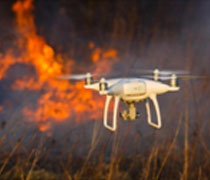
FOREST FIRE
FIGHTING DRONE
The use of drones in the aftermath of the Nepal earthquake was the only available way to understand the extent of damage and loss of lives in remote and unreachable parts of the country. Robots and other remote gadgets are critically important to reach places which are risky for human responders. Remote-sensing equipment today provides us with vital capacity in case of earthquake disaster management.
Communication is key for disaster management, but it is also most vulnerable to disasters. However, today technology gives us the ability to overcome this inherent weakness of structured communication. For example, Cisco’s Tactical Operations (TacOps) can take advantage of the latest mobile networking technology including cloud-control and Meraki technology to establish connectivity in disaster-hit areas at a speed which was unknown to us before.
Disaster prevention strategies
Prevention measures are employed to eliminate or reduce the incidence of severity. Few such measures include land use planning, preventing habitation in risk zones, disaster resistant buildings, finding ways to reduce risk even before the disaster strikes and community awareness and education.

DISASTER RESISTANT
BUILDING IN JAPAN
Disaster management practices call for revival of community action
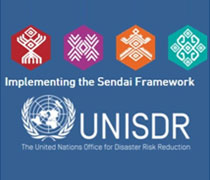
The Sendai Framework for Disaster Risk Reduction 2015-2030 recognizes that science, technology and innovation are critical in accelerating all aspects of disaster risk reduction and calls for cooperation among scientific and technological communities to develop a science-policy interface for effective disaster risk management.
_________________
Space business
_________________
The preparedness of Japan in space exploration business
Japanese banks, known for being conservative in their lending practices, are testing the waters in the space sector. Venture capital investment in indigenous space companies over the past 10 years has surged from a single investment worth a negligible $200,000 in 2013 to $411 million across 14 companies in 2022.
To be sure, the depth of investment in startups is nowhere near the scale within the U.S. space industry. However, the government does not want its country to have just a niche role. Japanese startups cover all segments of the space industry, including hyperspectral sensors, laser communications,
low-Earth-orbit communications satellite constellations, in-space services, lunar resource mining and space robotics.
The Japanese government is boosting its industry in areas that it deems strategic. For example, METI has provided technology research and development funds to microsatellite manufacturer Axelspace and Earth-observation startup Synspective to develop a general purpose small-satellite bus that could be used for optical Earth observation, synthetic aperture radar and low-Earth-orbit missions.

Japan Aerospace
Exploration Agency
India in space business
India’s space industry is valued at $8 billion, with a 2% share in the global space economy. The government spending on space is around $2 billion, and the country has launched 381 foreign satellites since 1999 for 34 countries, clocking $279 million in revenues. The global space market is projected to reach $1 trillion by 2040 as per various analysts, while India’s space market is growing at an annual growth rate of 4% in recent years.

ISRO (INDIA)
The Indian Space Research Organisation has made headlines worldwide for its successful missions. Chandrayaan-2, India’s lunar exploration mission, marked a significant achievement by locating water molecules on the Moon’s surface. Mars Orbiter Mission (Mangalyaan) earned India the distinction of being the first Asian country to reach Martian orbit and the fourth space agency globally to do so. These feats showcase India’s prowess in space technology. The recent success story is the soft landing of Chandrayaan 3 on the south pole of the Moon.
Moreover, ISRO’s collaborations with other nations and organisations have further elevated its status. The launch of foreign satellites using ISRO’s reliable Polar Satellite Launch Vehicle (PSLV) has become a sought-after service, driving India’s commercial space endeavours.
_________________
Green Technology
_________________
How green technology shaping the environment
Creation of environmentally sustainable models to support long-term economic growth require the implementation of green technologies that are capable of reducing carbon footprint. These technologies must be woven into strategic goals of existing and future enterprises. These initiatives allow for an expansion of the technological capabilities of businesses, especially the manufacturing sector, and helps them to maintain cleaner production, efficient resource management, and reduction in waste and pollution.
Oregon State University engineers have invented a hybrid electricity-generator, which uses waste-water to produce electricity. They have been able to combine two distinct power generation technologies – microbial fuel cells and reverse electrodialysis. The generator has the capacity to produce enough electricity to not only power water treatment, but also send power back to the main power grid. It allows the technology to form the basis of energy created from waste, and can be scaled up to match future demands.
Vertical farms are gaining popularity in the suburbs with its eco-friendliness. Vertical farming involves crops grown in vertical layers instead of growing them horizontally. It leads to increased sustainability, with some farms not requiring any soil input. With this eco-friendly technology, municipal bodies can build farms around cities and bring food supply closer to home, making it cheaper and affordable for locals. It will help to boost the ‘eat local’ approach and reduce food imports. Some cities have even created vertical farm walls around offices to farm more and to keep office premises cooler during summer. They have also helped to reduce greenhouse gas emissions because there is no need to transport the farm produce over long distances.
_________________
Special situations
_________________
Need for special incentives to manufacturing industry in priority areas in India
India is planning to provide incentives worth Rs 18,000 crore ($2.2 billion) to boost local manufacturing in six new sectors, including chemicals, shipping containers, and vaccine inputs.
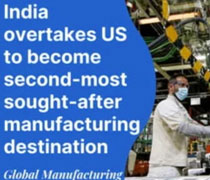
By 2030, India is expected to be the manufacturing hub for the global market with its capacity increasing to $1 Trillion, and to $20 Trillion by 2047. The Pharmaceuticals sector is the frontrunner, boasting 133 individuals on the list. With 109 individuals on the list, the Chemicals & Petrochemicals industry follows closely.
Challenges such as fragmented value chains, inefficient logistics, and inadequate coordination between suppliers, manufacturers, and distributors can result in delays, increased costs, and reduced overall productivity are leading causes of manufacturing declining in India. Special incentives has to be given priority.
______________________________
CLIMATE CHANGE
CLIMATE CHANGE BASED OPERATIONAL EXCELLENCE
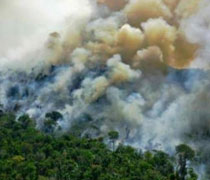
Climate Change and CO2
Emissions in Brazil Amazon
Climate Change Strategies in Brazil
________________________
Climate Change Strategies in Brazil
COUNTRIES THAT ACT TO FIGHT CLIMATE CHANGE
Brazil is the world’s 6th largest GHG emitter, and the impacts of climate change and extreme weather events in the Legal Amazon have significant and widespread effects for Brazil’s economy, ecosystems and populations that rely on them.Temperature-sensitive species may alter movement patterns.
Brazil’s population has increased steadily over the last 100 years. Although birth rates have fallen, improved healthcare means Brazilians are living longer and so the population continues to grow.
The update resumes the country’s ambition to the level of its first NDC from 2015: reduction of 48 percent in greenhouse gas emissions by 2025 and 53 percent by 2030. President Luiz Inácio “Lula” da Silva took office in January 2023 and committed to making combating climate change a priority.
Brazil intends to cap 2030 emissions at 1.20 gigatonnes of greenhouse gas, a reduction of 53% compared to 2005, the source said. Brazil’s new climate change targets would be more ambitious than the United States, which has pledged to cut emissions by 50-52% by 2030, also compared to 2005.
Brazil’s updated NDC target would increase emissions 58% above 1990 levels, or to approximately 962 MtCO2e (excl. LULUCF). To keep below the 1.5°C temperature limit, analysis by the 1.5°C Pathways Explorer shows that its emissions would need to be around 668 MtCO2e by 2030, leaving an ambition gap of about 294 MtCO2e.
______________
Our consulting on climate change is managed by a dedicated team from Brazil.
_____________________________
Brazil has made a remarkable transformation from being an exporter of tropical agricultural products (such as coffee, sugar, and cacao in the 1960s and 1970s) to becoming a major global supplier of: soybeans, soybean products, corn, cotton, sugar, coffee, orange juice, meat, and ethanol since the early 21st century.
The agriculture of Brazil is historically one of the principal bases of Brazil’s economy. While its initial focus was on sugarcane, Brazil eventually became the world’s largest exporter of coffee, soybeans, beef, and crop-based ethanol.
Main industries in Brazil are textiles, shoes, chemicals,cement, lumber, iron ore, tin ,steel, aircraft,motor vehicles and parts,and other machinery and equipment
MCGR Brazil team is involved in climate change adaptation initiatives with both global and Brazilian experience. |
_____________________________
DECARBONIZATION
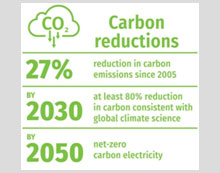
_________
DECARBONIZATION BASED OPERATIONAL EXCELLENCE
Decarbonization strategies in USA that are significant to global world
How do you develop decarbonization strategy and get benefit from it
Decarbonisation of the world economy
_____________________
OPERATIONAL
EXCELLENCE OF ENERGY INDUSTRY
Energy Industry
Decarbonization strategies in USA that are significant to global world
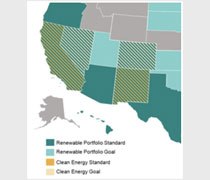
The deep decarbonization framework centres around five decarbonization strategies in USA as follows:
Energy Efficiency: Reducing Energy Consumed to Provide an Energy Service
Energy efficiency is a critical cost-reduction decarbonization strategy: the less energy needed, the less investment required for new energy resources.
The study finds that aggressive building and appliance efficiency improvements cause per capita energy consumption to decrease 50 percent from 2020 to 2050. Efficiencies in planes, marine vehicles, and industrial processes are also essential.
Electricity Decarbonization: Reducing Electricity Generation Emissions Intensity
A clean grid is an integral decarbonization strategy. The northwest region achieves its emission reduction goal with an electricity grid that is 96% clean by 2050.
The average carbon intensity of electricity generation—already relatively low in the Northwest due to hydroelectricity—decreases to near-zero by 2050. The share of electricity from gas-fired generation is just 3.7% in 2050. In addition, increased electricity grid integration between the Northwest and California would save $11.1 billion.
Fuel Decarbonization: Reducing the emissions intensity of liquid and gaseous fuels
Liquid and gas fuel carbon intensity decreases by 70% in 2050, when all passenger vehicles and nearly half of all freight trucks are electric. Biomass is best reserved for the harder-to-decarbonize sectors, namely aviation, maritime, and long-haul trucking.
Electrification: Switching end uses from fossil fuel to electricity
Electricity consumption increases by more than 50% and comprises one-half of all energy demand in 2050, with cars previously powered by gasoline and diesel fuels and buildings and water heated and cooled by gas and oil switching to clean electricity.
Carbon Capture: Capturing CO2 from a facility or removing it from the atmosphere
Emerging technologies that deploy hydrogen created through electrolysis by renewable energy with captured carbon dioxide to produce either synthetic gas or liquid fuels will play a key role by 2040. Four million metric tons of CO2 will need to be captured annually by 2050, with about half used to produce synthetic fuels and the other half sequestered.
_____________________
How do you develop decarbonization strategy and get benefit from it
Governments, utilities, businesses and other entities have zoned in on mitigating climate change by setting aggressive decarbonization goals in an effort to lower carbon emissions.
Many companies have also chosen to act. There now are more than 215 global companies that have joined industry leaders such as Amazon, Mercedes Benz, Microsoft and Unilever in signing the Climate Pledge. This collective business community effort is aimed at achieving net-zero carbon emissions by 2040 – a full 10 years ahead of the Paris Agreement timeline. In addition, more than 340 companies have signed onto the RE100 pledge to use 100-percent renewable energy.
Embrace digitization
Digitalization provides the opportunity to collect and analyze vast amounts of data, creating a 360-degree view of our infrastructure.
________
Decarbonisation of the world economy.
International measures targetted to achieve net zero emissions
Globally, C40 cities have set net zero targets and signed to reduce GHG emissions while constructing buildings that are net zero rated. They run off from renewables and don’t produce greenhouse gas emissions. The objective by 2030 is for every newly constructed building to be green and by 2050, this goal expands to cover all buildings in line with the Paris Agreement. Out of all the initiatives we could choose to focus on, this one is the most important. After all, buildings are responsible for approximately half of emissions and power consumption.
The World Green Building Council is also a global project working towards net zero 2050 in the entire building industry and achieving net zero targets in all new buildings by 2030.
Many countries are involved in the project including the Green Building Councils for the following nations so far: Brazil, Canada, Australia, Columbia, Croatia, The Netherlands, The UAE, Spain, Finland, South Africa, Guatemala, Hong Kong, India, Ireland, Jordan, New Zealand, Norway, Poland, Singapore, Sweden, The UK, The US, Indonesia, Italy, The Philippines, Chile, China, Alliance France, and The German Sustainable Building Council.
_________________
Our consulting on decarbonization is managed by a dedicated team from Denmark.

_____________________________
The elimination of power stations that burn coal has helped Britain cut its carbon emissions faster than any other rich country since 1990.But, Denmark has ensured ambitious climate action by passing the 2020 Climate Act into law. The Climate Act sets a target to reduce Denmark’s greenhouse gas emissions by 70% in 2030 compared to 1990 levels and a long-term objective of climate neutrality by 2050 at the latest.
The new Danish government has announced more ambitious climate change targets, proposing to reach net zero by 2045 instead of 2050 as well as reducing CO2 emissions nationally by 110 percent – consequently reaching a negative level – in 2050 compared to 1990 levels.
Denmark aims to become climate neutral by 2045, and to decrease greenhouse gas (GHG) emissions by 110% in 2050 compared to 1990 levels, relying on carbon dioxide removal (CDR) for both goals. The 110% reduction goal would require around 8 million tonnes (Mt) of net negative CO2 emissions.
Denmark’s energy and climate ambition in sectors such offshore wind, biomethane and district heating are transforming the country’s energy system and reinforcing its image as a clean energy leader toward net zero emissions by 2050, according to a new in-depth policy review by the IEA.
When you want to move in the direction of decarbonization, the Danish MCGR team will definitely help you. We have deep knowledge on global decarbonization, US strategies on decarbonization and decarbonization development in Denmark. |

______________________________
GOVERNMENT AREAS THAT WE ARE INVOLVED
Urban Development |
Foreign Direct Investment |
Sovereign Wealth Fund |
Special Economic Zones and Hubs |
Global Sports Hub Development |
Global Tourism Hub Development |
_________________
MCGR REGION THAT IT SERVES
Asia
Asia Pacific
Europe
Middle East
United States and Canada
South America
_________________________